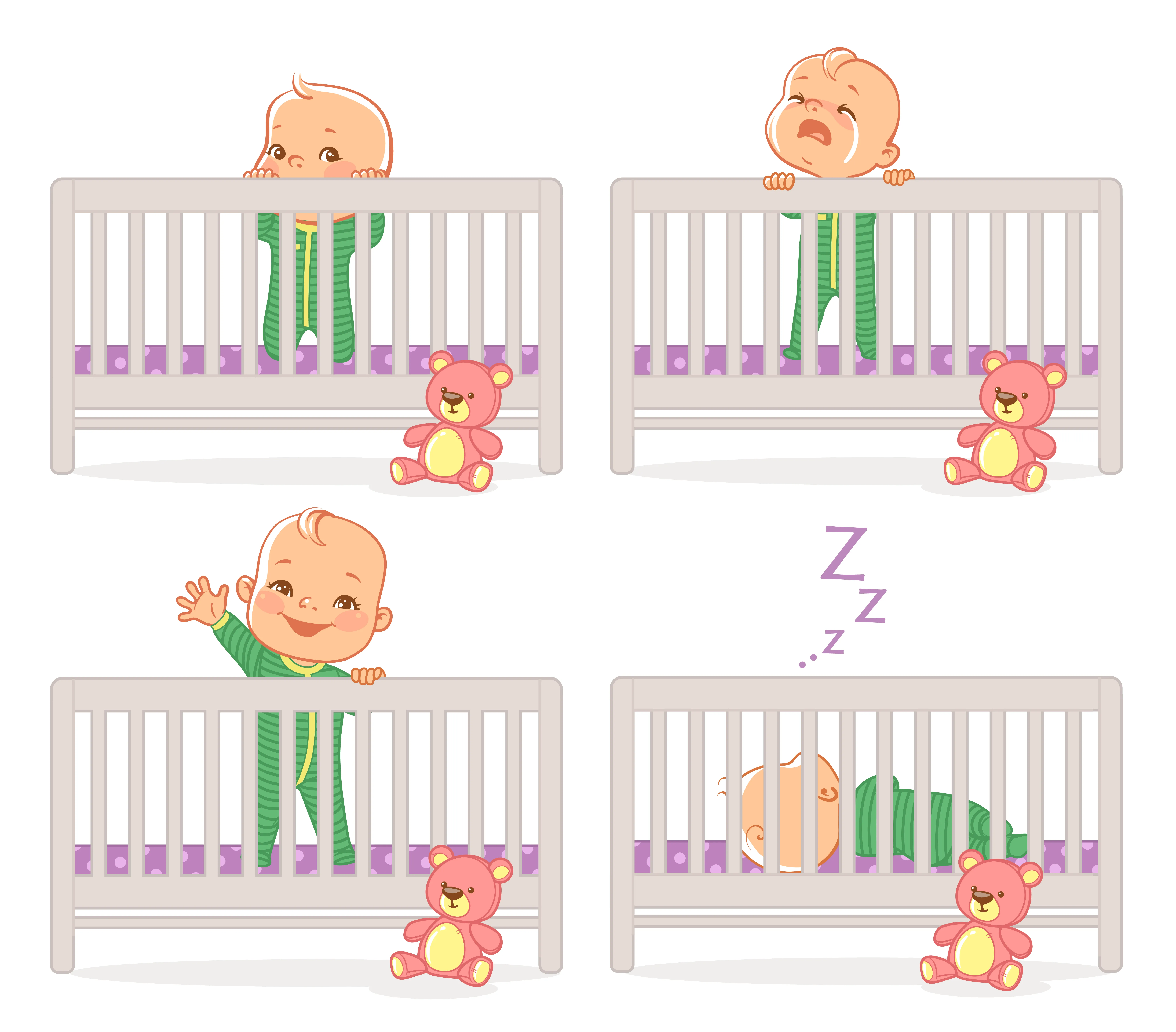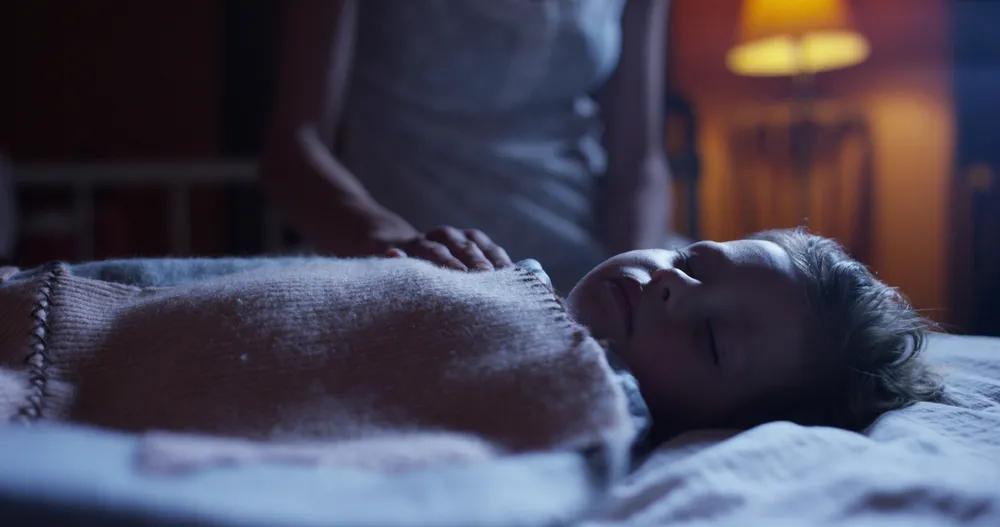One of the most common struggles for parents, especially new parents, is to help create good sleep habits for their baby. Sometimes parents get lucky and it just happens naturally. But most of the time, it does take a little bit of work by creating a routine, setting up structure, and being consistent.
A lot of parents will turn to sleep training experts to help guide them on what to do with their little one, particularly if they are having a hard time. This can happen to any parent — even the ones who’ve already done it with previous children. This is because every baby is different! There is no shame in seeking help, and we’re here to make things a little easier by providing a detailed outline of some of the most commonly used sleep training methods.
What is Sleep Training?
It’s probably strange to think of sleep as a skill that babies need to develop, but it is! As adults, we’re able to fall asleep when we’re tired and we can recognize the ques our body gives us to let us know we’re tired. We’re able to set up routines so that we can sleep through the night. Babies do not have that skill. While they spend lots of time sleeping, they don’t know how to sleep. It’s something they need to be taught and sleep training is the best way to do so.
While most people associate sleep training with letting their baby cry it out without comfort until they fall asleep, that’s not true. There are so many different methods when it comes to sleep training and it’s all about finding the best fit for you and your baby. The goal is to teach them the skill of how to fall asleep on their own, this includes if they wake up in the night. You want them to be able to put themselves back to sleep.
When Do You Start Sleep Training?
The age at when a parent decides to start sleep training their baby depends on development, but often occurs between four and six-months. According to Jennifer Garden, an occupational therapist who runs Sleepdreams in Vancouver, she told Today’s Parent that most children are ready to learn how to fall asleep on their own within this age range. The key is to establish the skill of being able to fall asleep on their own before they get too keen on being soothed to sleep.
BabyCenter also notes that around 4-months-old, babies will develop a regular sleep-wake cycle and likely don’t require nighttime feedings. If they do fall into that category, your child is ready to start sleep training. Remember, every baby is different! Some might not be ready until they are a bit older. It’s also important to note that sleep training can be done at any age. If you want to start but your child is older than six months, don’t worry. It’s never too late to start teaching them healthy sleeping habits.
How to Choose a Method
The method a parent chooses for her child will likely depend on their age. Some methods are more “gentle” than others. For example, you might not want to let them cry it out if they are under five months old, but if they are closer to 1-year-old in age, you won’t want to offer too much soothing. Choosing a method will also depend on your parenting techniques. Just as every baby is different, so is every parent. Pick the method that you think you’ll be the most consistent with.
Today’s parent advises parents to not try any kind of formal sleep training method earlier than four-months-old because for sleep training to work, they are required to go for long periods of time between feeds and develop their circadian rhythm. According to pediatrician Michael Dickinson, president of the Canadian Pediatric Society, most babies older than four-months-old are biologically ready to go through the night without feeding, but you should always check with your doctor first.
The Ferber Method (Check and Console)
The Ferber method is also sometimes referred to as check and console, graduated extinction, progressive waiting, or the interval method. You’ll hear of people doing this method a little differently, but overall the premise is the same. You can check on your baby at intervals, but don’t feed them or rock them to sleep. You want to teach them to fall asleep on their own.
According to Today’s Parent, after going through their bedtime routine and laying them down in their crib, leave the room and wait. If they cry, go back in and offer them reassurance with words or a touch (e.g. rub or a pat). Do not pick them up. It’s important to note, there are some experts like Garden who believe this technique should only be reserved for babies under 7-months old.
As the evening goes on, continue to check on them but start to increase the amount of time in between checks until they are about 10 to 15 minutes long. Keep doing this until they fall asleep. When they wake up, you’ll have to start all over again. While this technique seems tedious and can take up to a week to work, experts promise results after just a few nights.
Extinction (CIO: Cry It Out)
The Extinction method or CIO (cry it out) is also sometimes referred to as “self-soothing” because that’s what you’re teaching your child to do. This approach advises parents to have their baby cry it out alone until he/she goes back to sleep. The method is called the “extinction” method because the goal is to extinguish the behavior (crying) by not responding to it.
This method is still highly debated by experts and a little controversial, particularly when it comes to what to do if your baby continues to wakes up in the night and cry. For the most part, it all depends on what stage your baby is at in terms of development. Some experts, such as Alanna McGinn, a certified sleep consultant and founder of Good Night Sleep Site, suggest leaving your baby until morning, even if he/she wakes up crying. Others believe in offering consolation after so many wake ups, particularly if they continue throughout the night.
A lot of parents struggle with this method because they simply can’t stand to hear their child cry it out. The first night is the worst. They could be awake crying every hour of the night. But experts promise that after a few days, you should notice your child crying less and less. Never let a child cry indefinitely.
Chair Method
The chair method, also known as the Sleep Lady Shuffle, offers a very gradual approach to sleep-training, but still requires a lot of discipline from the parents. With this method, the parent still preps their baby for bed with their nighttime routine, but instead of leaving the room, sits in a chair next to the crib. They can verbally soothe the baby when they cry, or even offer a pat on the back, but don’t pick them up. Once they’ve fallen asleep, leave the room. If they wake up, come back in and sit down in the chair until they fall back asleep. Every few nights, move the chair further and further away until you’re eventually out of the room.
“The pro of this method is that mom or dad is there and present,” says McGinn to Today’s Parent. “But the con is, there will likely still be some crying, and now baby is watching you watch them cry. It can be really hard to be consistent with this method.” There are some sleeping training experts who do not like this method because it’s confusing to the child having the parent in the room watching them cry, but not offering any consolation. Pamela Mitelman, a psychologist in Montreal who specializing in infant and child sleep, says it can be too much stimulation to have the parent in the room, depending on the baby’s age and development stage.
Pick Up, Put Down, and Shush-Pat
This method is great for babies who are under seven-months-old because the parent is allowed to stay in the room, but doesn’t offer much support to help them fall asleep. You can stand over the crib and shush them, pat their tummy or apply pressure to calmly reassure them, but that’s it. Today’s Parent explains that another option within this method is to let them fuss a bit, but when they escalate, pick them up and soothe them. Just be sure to put them back down before they fall asleep. “Our job is to help calm the child, and their job is to fall asleep,” says Garden to Today’s Parent.
While this method is great, especially for younger babies. Don’t use it on a baby that is older than six or seven-months because your presence in the room will likely just be confusing and make them more upset. Similarly, if you’re picking them up and putting them down, that will cause too much stimulation for an older child.
Fading Method
According to UPMC, the fading method takes elements from other methods to create a middle ground. Sleep.org refers to this method as “the hybrid.” Both offer parents a middle ground for the CIO method. With this method, a parent will wean their baby from any nighttime soothing over the course of a few weeks as opposed to abruptly stopping. There are several ways to go about it — we’ll go over each in more detail in the following methods, but some parents will fade by putting more and more time in between when they go in and reassure their child. When offering this reassurance, don’t pick them up! It’s meant to slowly diminish the role of the parent at bedtime until their baby is able to fall asleep on their own.
Others might sit by the crib while their baby is falling asleep and then slowly move farther away each night. “The idea is to be his coach, not his crutch,” says Kim West, a licensed clinical social worker and author of The Sleep Lady’s Good Night, Sleep Tight to BabyCenter.
Bedtime Routine Fading
Similar to the fading method, the bedtime routine fading encourages parents to do whatever they were doing before to help their baby fall asleep (rocking, nursing, etc), but slowly start to decrease the amount of time spent doing that. The theory is you’ll wittle the time down to a point where you’re not doing it at all. According to Today’s Parent, this technique works great to minimize crying, but many parents find it hard to sustain. “There has to be an end in sight,” says Mitelman to the source. “For example, we’ll meet this need for five to seven days and then we’ll pull back a little bit.”
The key to success is to pick a plan and stick to it until your baby starts going to bed without assistance. It’s worth a try, especially if other methods aren’t working. “Whichever way the child can get to sleep independently is fine because that’s the key ingredient to sleeping through the night.”
Bedtime-Hour Fading
While the names sound similar, bedtime-hour fading is different from bedtime routine fading. This method requires parents to put their baby into the crib at the time they tend to doze off and start to make that the new bedtime. Do this for a couple nights, then try moving it to an earlier time. Today’s Parent provides the example of, if you always put your baby down at 7:30 p.m. but they fuss in their crib for 20 minutes or more, this means 7:50 to 8 p.m. is their “natural bedtime.”
The key is to figure out what time they naturally fall asleep. You can do this by keeping a diary for a few nights to track their sleeping and what time they settle, then move the whole routine up by 15 minutes. Continue moving their bedtime by 15 minutes each night until they have shifted from their old habits and start nodding off at the time you want them to instead of their later natural bedtime.
No Cry Method
The No Cry Method is sometimes referred to as the No Tears Method. It basically is exactly what it sounds like. You don’t let your baby cry themselves to sleep, but rather focus on shifting their habits. It’s a much gentler approach than some of the others mentioned here, so it can take a little more time, but in the long run it can be just as effective.
This method uses a very gentle fading approach to gradually ease a baby out of their go-to sleep strategy. The No Cry Method allows parents to rock their baby to sleep, but eventually rock them less and less until the baby falls asleep without rocking. Parents can try switching the routine if needed. For example, if your baby falls asleep while nursing, try switching them to reading a book instead so that they never rely on one technique alone.














